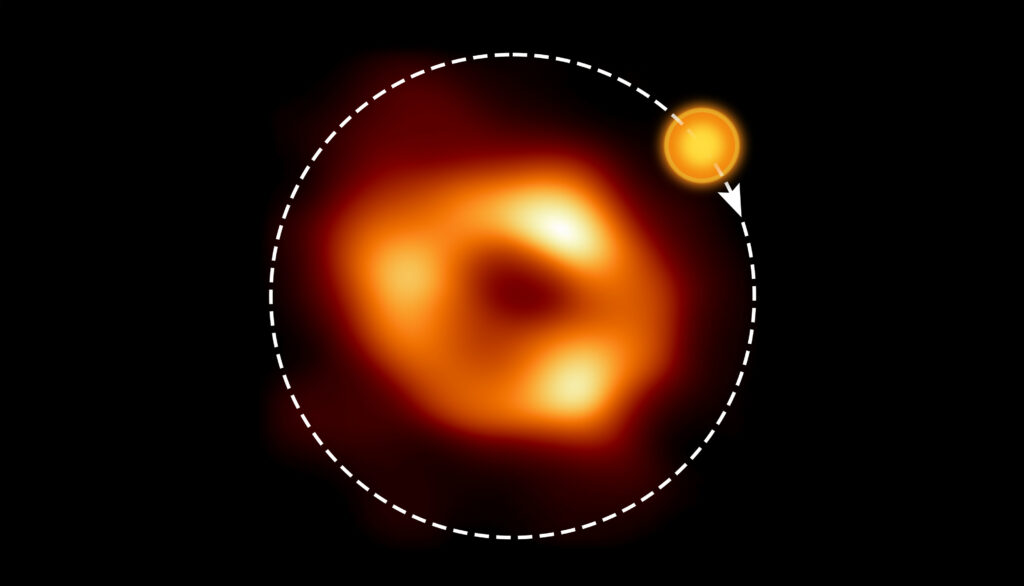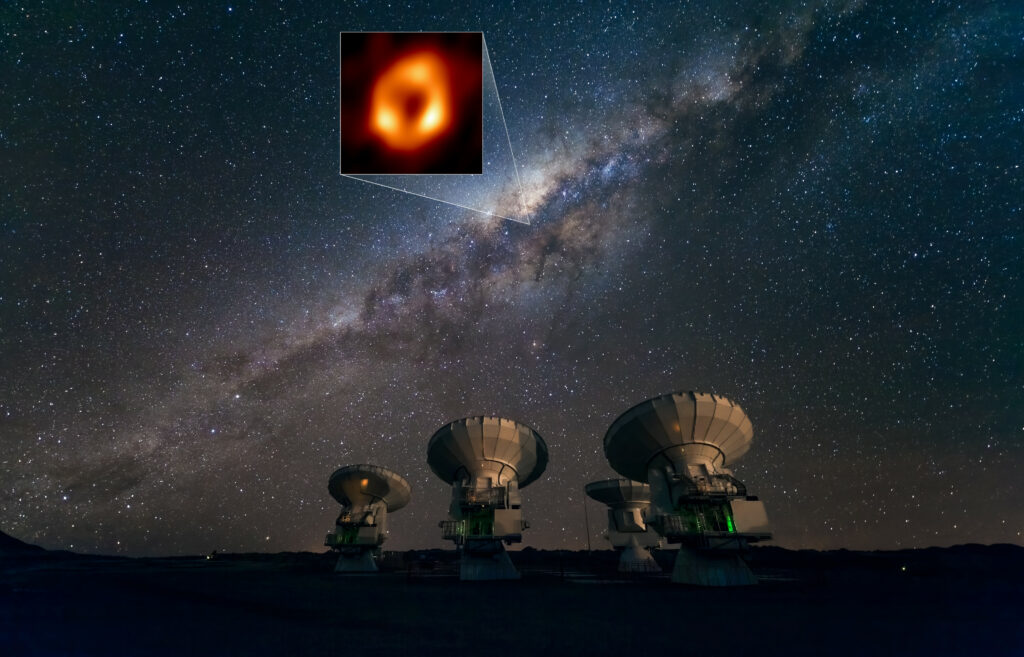Thanks to the ALMA complex of radio telescopes, astronomers have recorded signs of the existence of a hot spot in orbit around Sagittarius A* — a supermassive black hole located in the center of the Milky Way. This discovery will help to better understand the mysterious and dynamic environment in this region of our galaxy.

The discovery was made during a campaign to obtain images of black holes conducted by the Event Horizon Telescope (EHT) Collaboration. In April 2017, eight radio telescopes participating in the project (including ALMA) made observations of Sagittarius A*.
During the calibration of the data obtained, researchers from the Max Planck Institute of Radio Astronomy discovered something unusual. In measurements carried out only by ALMA, signs of the existence of a hot spot around Sagittarius A* were recorded. It moves in an orbit of about the same radius as the orbit of Mercury, but at the same time makes a complete revolution around the black hole in just 70 minutes. This means that it is moving at a speed of 30% of the speed of light.
According to astronomers, the hot spot at Sagittarius A* is a gas bubble. The fact is that some of ALMA’s observations were made shortly after the burst of X-ray radiation in the center of our Galaxy, which was recorded by the Chandra telescope. Such events are usually associated with the consequences of magnetic interactions in very hot gas located near black holes.
Interestingly, prior to this, flashes in the vicinity of Sagittarius A * occurred only in infrared and X-rays. Scientists believe that the burst of radio emission could be caused by the cooling process of the gas.

The discovery has an important role for a better understanding of the processes occurring in the vicinity of black holes and their nature. The researchers compared the data collected by ALMA with theoretical models in order to learn more about the formation of a hot spot, about the environment in which it is located, and about the structure of the magnetic field around Sagittarius A*.
Astronomers plan to continue tracking the hot spot at all available frequencies. In the future, they hope to get direct images of gas clumps near Sagittarius A* using the ESO’s Extremely Large Telescope (ELT) under construction in Chile. It is expected that it will be put into operation in the second half of this decade.
According to https://www.eso.org
Follow us on Twitter to get the most interesting space news in time
https://twitter.com/ust_magazine
